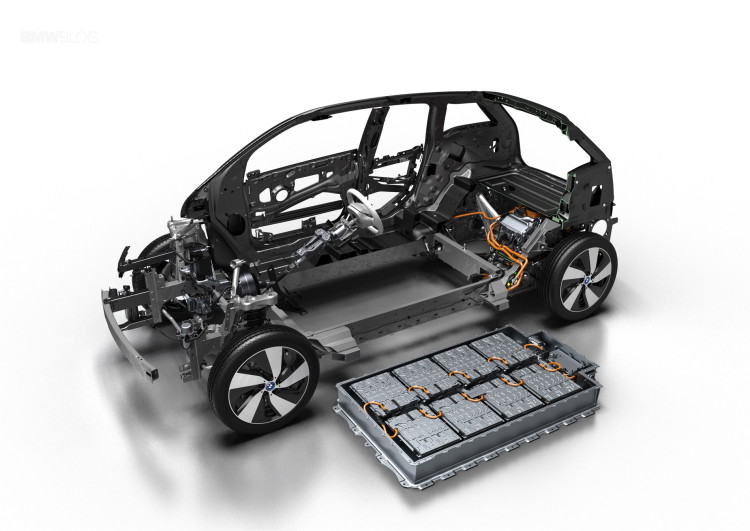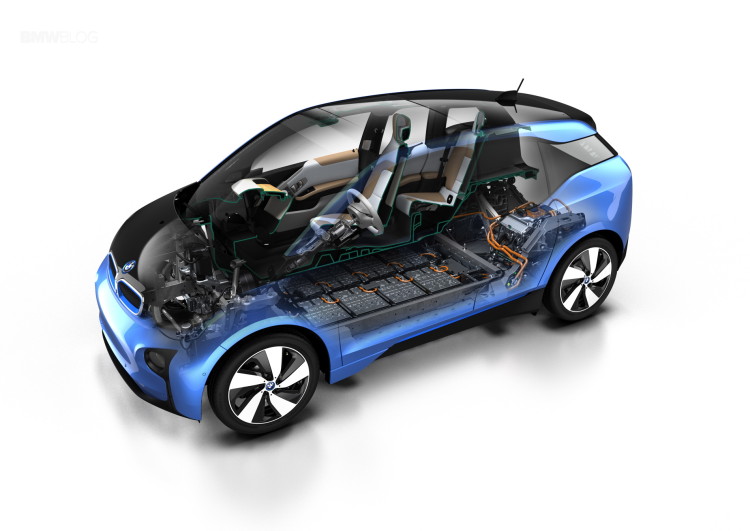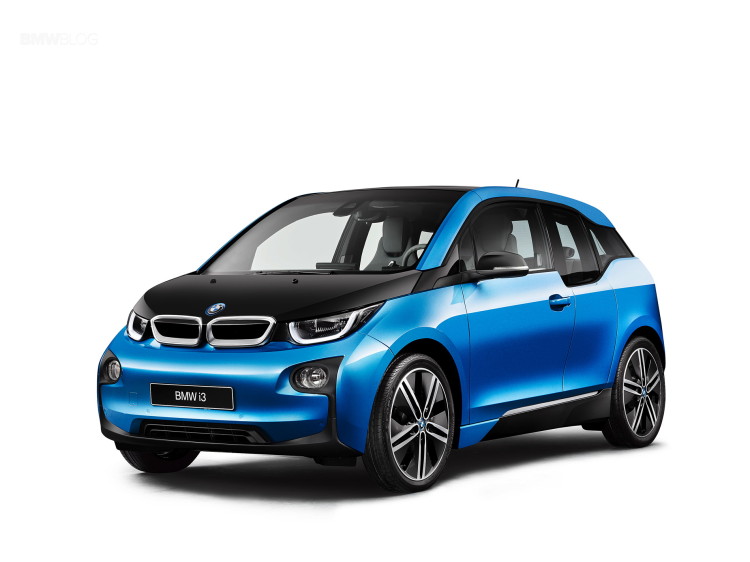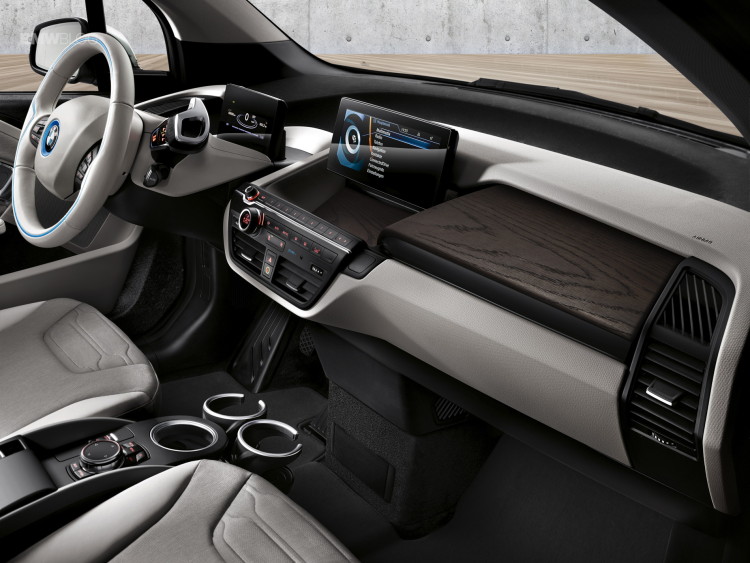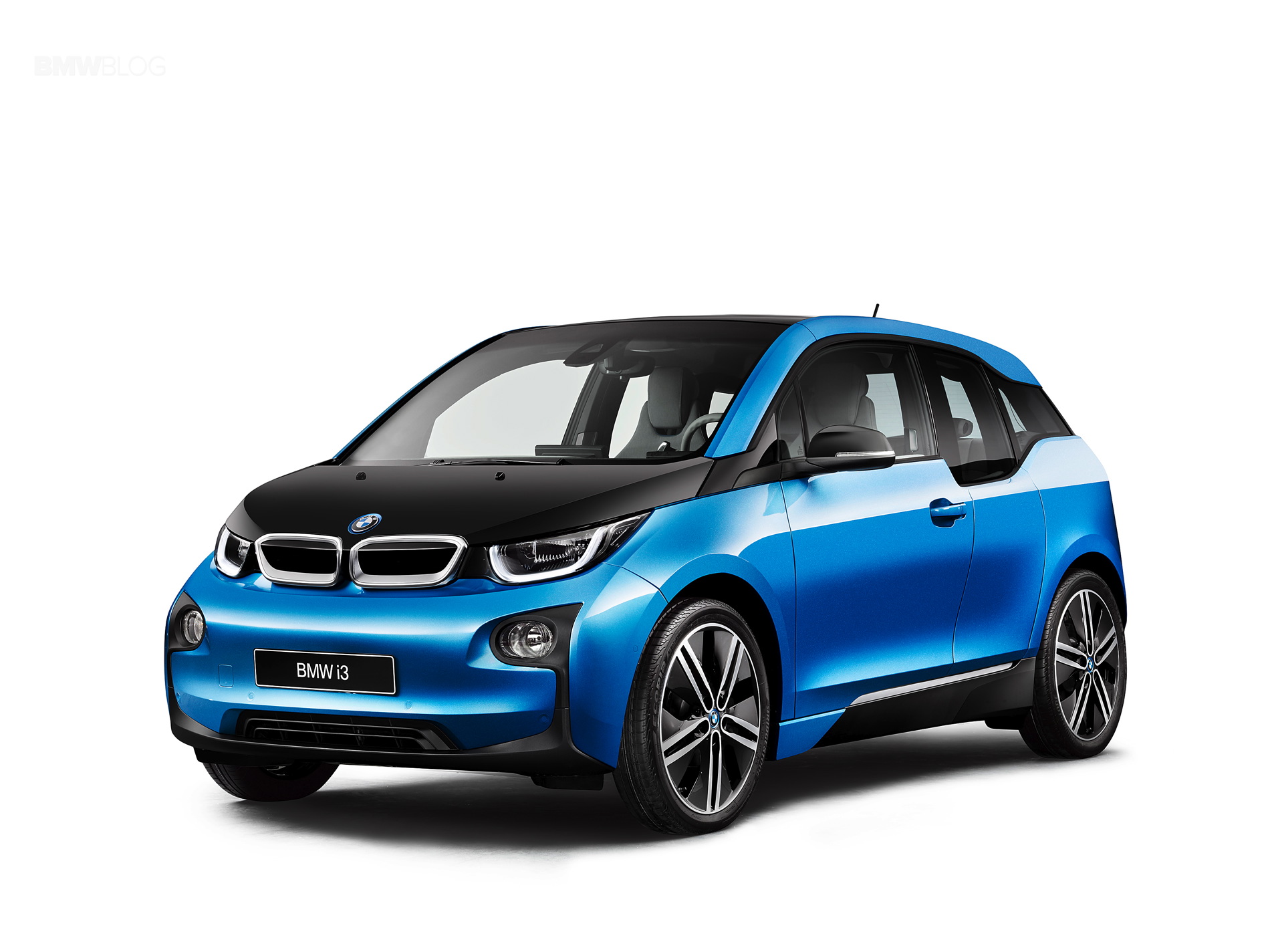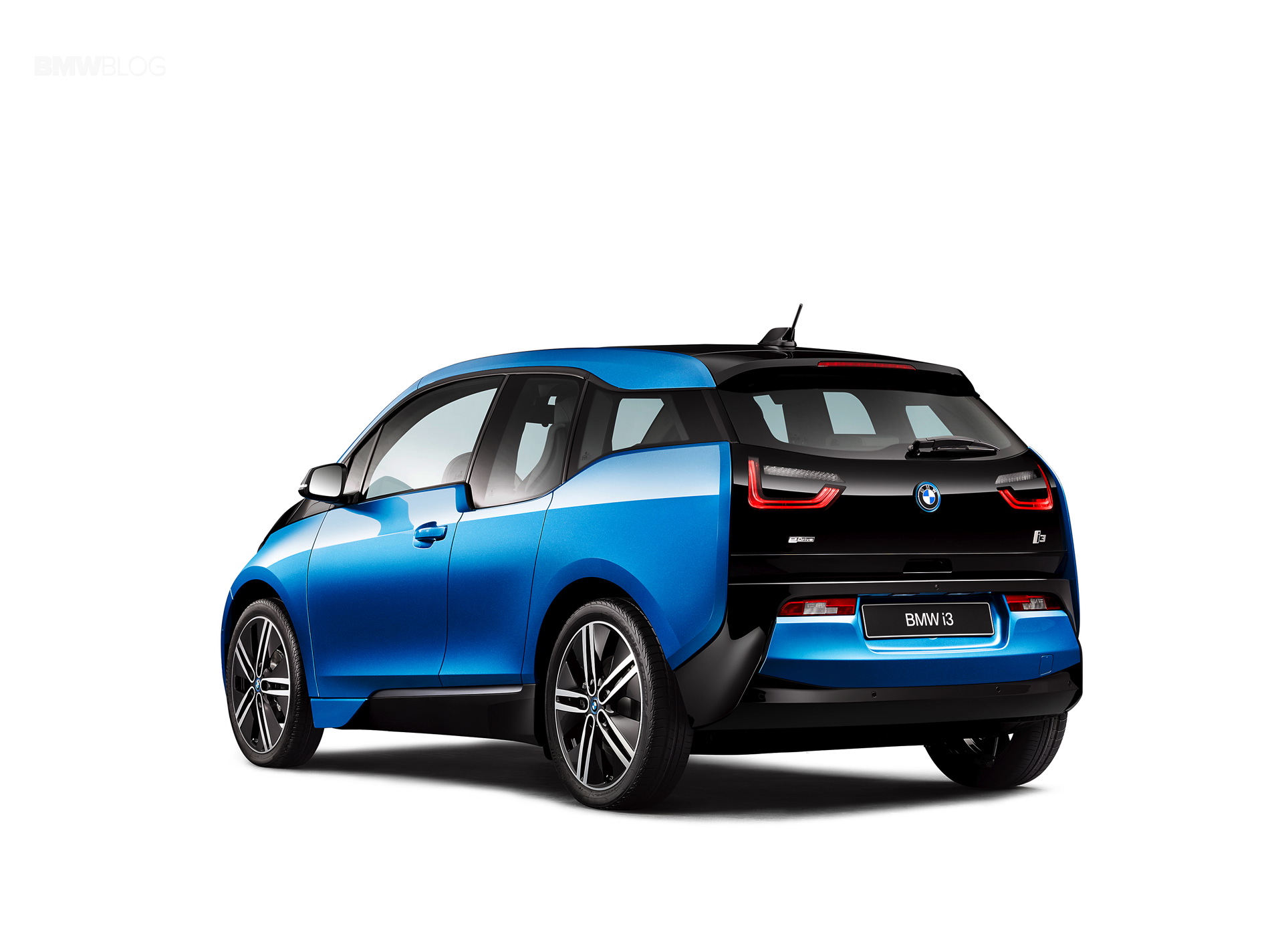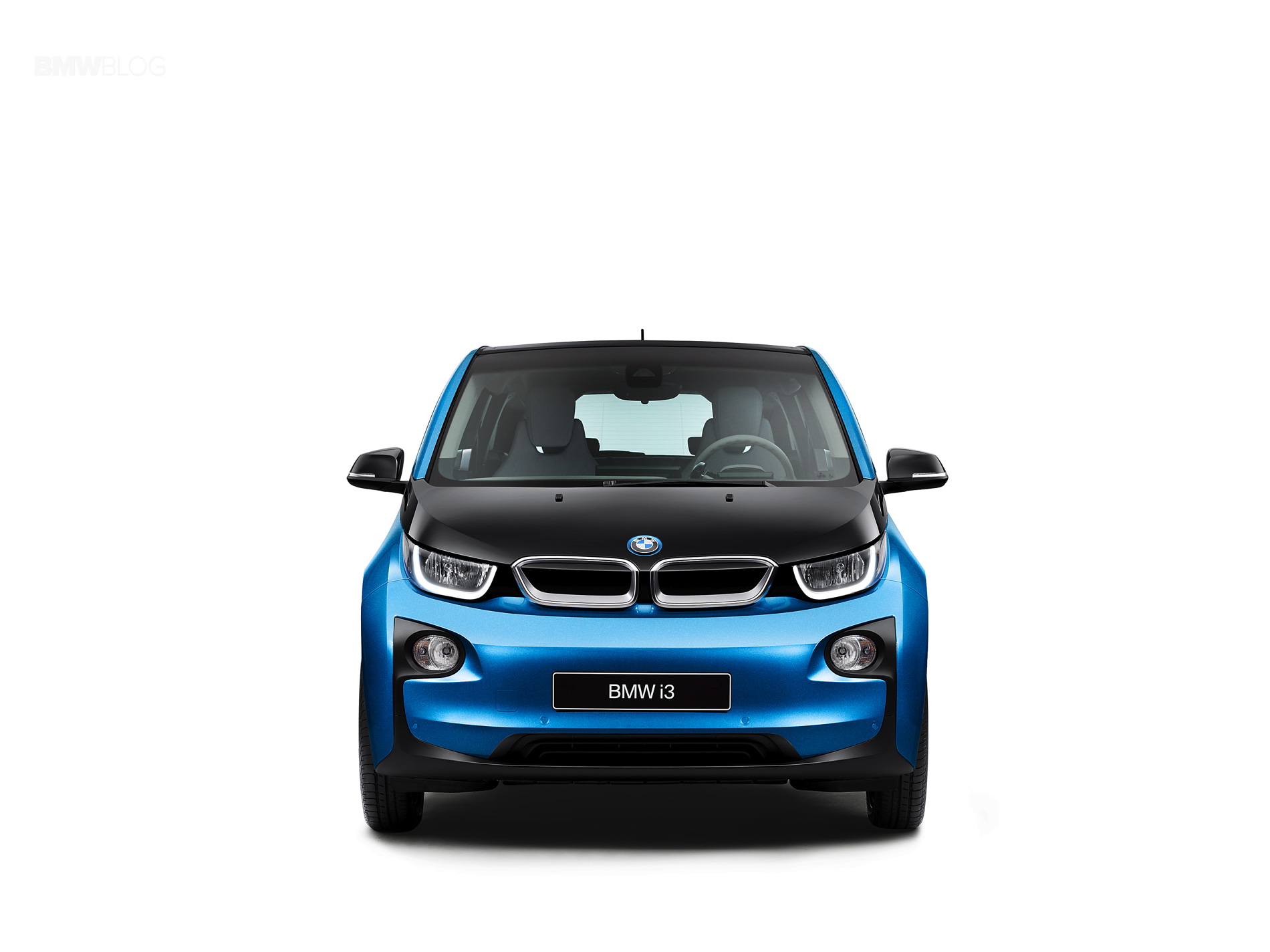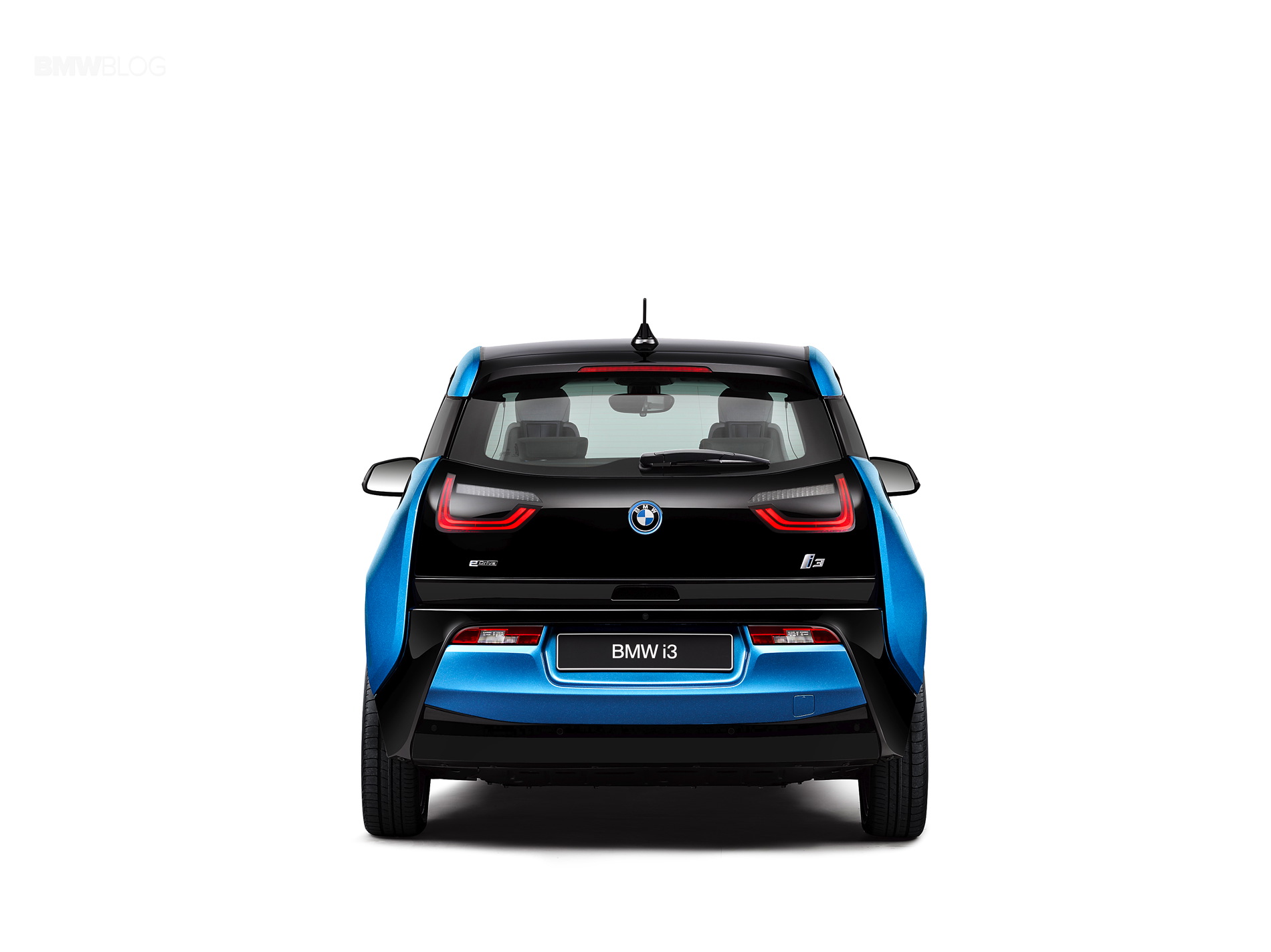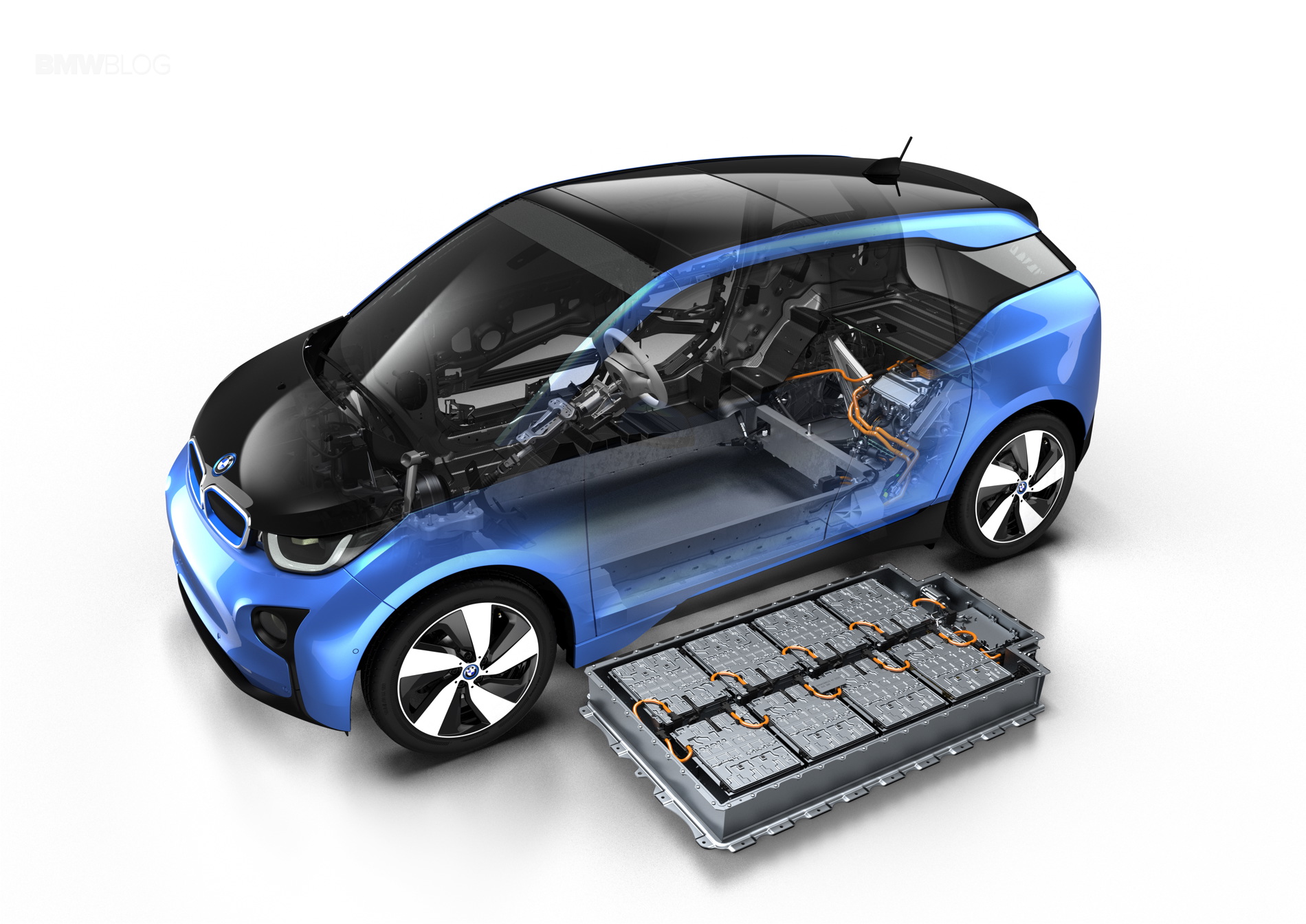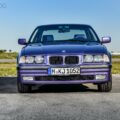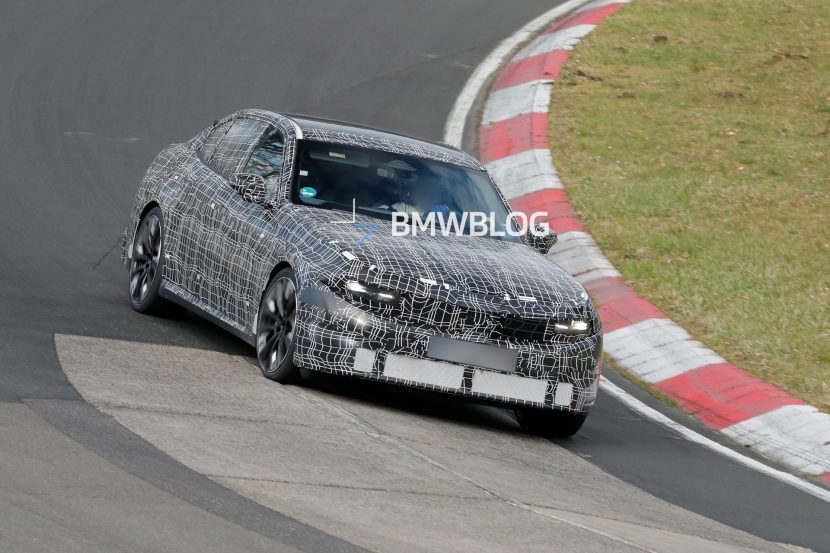By far and away, the largest criticism of the BMW i3 has been its range. Aside from its 80 mile or so range, the BMW i3 is a brilliant car and one that’s been pretty universally praised for its driving dynamics, spacious interior and funky design. It’s a car that has stood out among the sea of boring Nissan Leafs and Chevrolet Volts. However, many people still can’t get past the fact that its range is meant more for cramped cities than anything else.
Well, BMW has remedied that a bit for this coming year. For 2017 models, the BMW i3 will now feature a higher-density 94 Ah battery, compared to the previous i3’s 60 Ah battery, that will provide the i3 a range of around 114 miles, with maybe ever more if all the A/C and heating systems are turned off and the car is in ECO Pro+ mode.
This new 94 Ah battery has a capacity of 33 kWh (kilowatt hours), thanks to a higher density of the lithium-ion cells. Yet, despite the added capacity, the battery hasn’t increased in size at all, meaning it fits perfectly into the same battery tray as the previous-gen i3’s.
BMW i3 Protonic Blue
The high-voltage battery of the BMW i3 consists of eight modules with twelve storage cells each and its capacity has increased by more than 50%. BMW worked with Samsung to increase the capacity by optimizing the cell-internal packages with more electrolyte and adapting the active material. Of the overall 33 kWh, 27.2 kWh can be effectively used. This compares to the previous battery’s 22 kWh, of which only 19 kWh could efficiently be used. All this is fancy smart talk for the battery being about the same size, but being able to provide a longer range.
The only real downside of this new battery change, if you can call it a downside, is that there’s a bit of a weight penalty. The higher-density battery is exactly that, higher in density, so the new BMW i3 weighs in at 2,961 lbs for the BEV (Battery Electric Vehicle) and 3,234 lbs for the REx (Range Extender) model. However, despite the slight bump in weight, the new BMW i3 is still rated for 0-60 mph in just over 7 seconds and still manages 114 miles of range. This makes it the fastest EV in its segment, as well as the lightest. In fact, the BMW i3 achieves a 5.1 second time for accelerating from 50 to 75 mph, which is great for an EV.
With the introduction of the new 94 Ah battery, BMW gives i customers the opportunity of retrofitting their purely electric BMW i3 (60 Ah) with the new 33 kWh battery as part of a high-voltage retrofit program This program is available in selected markets. We’ve learned that the US market will likely not offer this option. The 22 kWh batteries traded-in by customers are used to build stationary storage battery modules thus starting their second life.
In terms of charging, the added density of the battery does increase recharge time just a bit. Using a Level 2 charger, the 33 kWh battery takes about 4.5 hours to charge from flat, an hour more than the 3.5 hours of the 22 kWh battery in the original i3. Small price to pay for the added range. However, the BMW i3 is equipped with future-proof 50 kW DC fast charging which can recharge the battery a minimum of 80 percent in less than 40 minutes. This is a bit slower than the previous model, which would do 80 percent in just 25 minutes on 50 kW, but the new model is still achieving 2.5 mi/min, which is very good. The new BMW i3 will also still come with the Occasional Use Cable.
REx models, with their two-cylinder gasoline range extending engine, will also be receiving a range bump, as they will be fitted with a larger 2.4 gallon gas tank this time around. This range extender will kick in whenever the battery reaches a range lower than 6.5 miles. With over 100 miles of range from the battery, it’s likely that the need for this model decreases significantly and those that do purchase the REx will likely only use it for long journeys, never really needing to ever tap into it. It does come with a slight 270 lb weigh penalty, however, which slows the car down a bit, causing an 8.0 second 0-60 mph time.
Battery size isn’t the only new addition to the i3, however. New paint colors will be available, including the new Protonic Blue Metallic color, previously only available on the BMW i8. Capparis White and Fluid Black sum it up for the non metallic colors, while the other metallic options are Mineral Grey, Platinum Silver and Ionic Silver.
A new Deka World will be added to the i3’s collection of “World” trim levels, which will include a a lightweight dark cloth fabric. The Tera World will now get a new trim option of Dark Oak Wood to go with the Light Eucalyptus Wood option. These two trims will also be available with the Giga World.
However, the big news comes for the US model BMW i3, which will now be available with an electric moonroof. American BMW i3 fans have been complaining about the i3’s lack of a moonroof option in the US since its launch and they finally get their wish. Other standard equipment will include Dynamic Cruise Control, LED Headlights, Navigation Business System, as well as Driving Dynamic Control and Park Distance Control.
Later this year, BMW i will also be offering the new BMW Home Charger Connect, a residential fast-charging station for the i3, as well as any other plug-in BMW. The new BMW Home Charger Connect features a new, sleeker design and can charge the i3’s battery in around 4.5 hours. It will also come with WiFi and feature innovative charging services that can be accessed remotely.
The new BMW i3 isn’t a drastic departure from the previous model, adding only a few new features and some added range. But those few things take the BMW i3 from a good EV to a great one. Now it has a range of over 100 miles, more than enough for anyone in its target audience, it has the moonroof option so many fans were asking for and it has some cool new color and trim options as well. The BMW i3 has become a better, more well-rounded car than it was prior to this update and it should help stifle some of the criticism towards it. Is the i3 the perfect EV overall? No, probably not. But is the BMW i3 the perfect EV for the sort of customer BMW i is marketing it toward? Yes, absolutely. Especially now.



